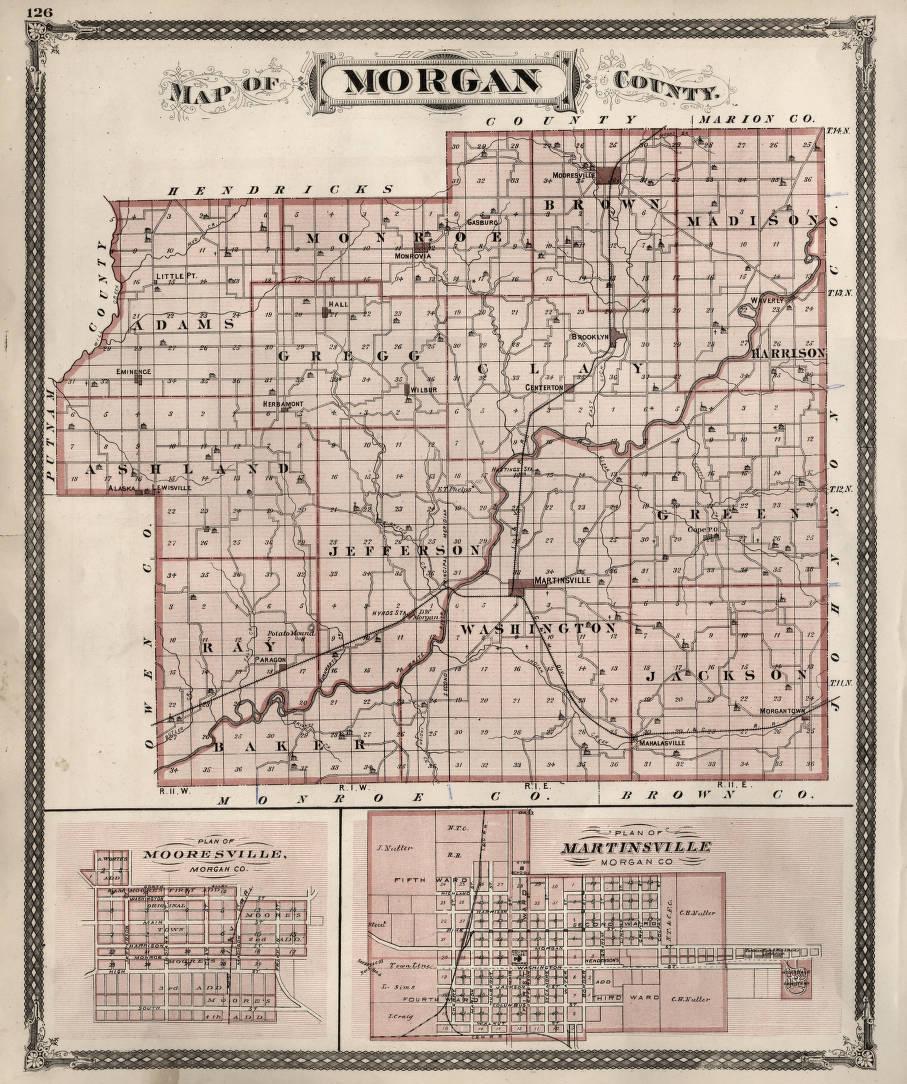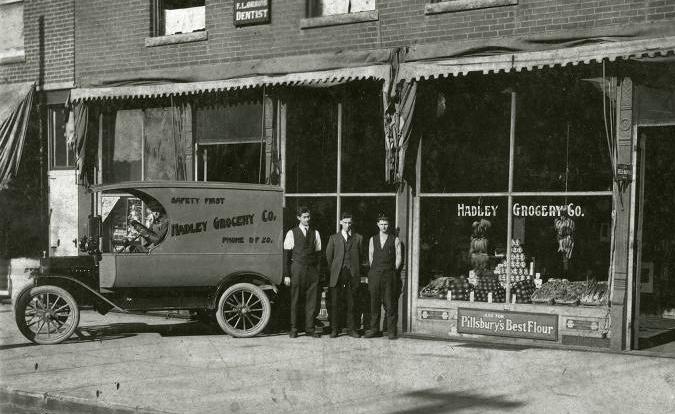The city of Martinsville sits in southcentral , immediately southwest of Indianapolis. Platted as the county seat in March 1822 the city derives its name from county commissioner and surveyor John Martin.

Through the 1830s, Martinsville relied on the whiskey trade for much of its modest wealth and growth. By the mid-1830s, there were eight distilleries producing corn and rye whiskey and apple and peach brandy and dozens of taverns in and around Martinsville.
After 1835, the economic focus switched to the pork trade. Hogs were driven from all over central Indiana to slaughterhouses at Martinsville. The carcasses were packed during the winter and floated on flatboats down the West Fork of to the Ohio River, arriving in New Orleans by the spring. This trading system flourished until the development of railroads in Indiana after 1850.

In 1853, the Martinsville and Franklin Flatbar Railroad was completed to Martinsville but operated for less than five years. The completion of the Indianapolis and Vincennes Railroad in the late 1850s spurred growth in the county seat.
Architect Isaac Hodgson designed the Morgan County Courthouse in Martinsville, which Perry Magnus Blankenship built from 1856 to 1859. The courthouse features a red-brick and Italianate design and is one of the few pre-Civil War courthouses in Indiana.
This structure has served as the anchor of Martinsville’s commercial district and sits in the center of the historic downtown square, which is one of the most intact historic commercial districts in Indiana. Martinsville City Hall, constructed in 1917, sits adjacent to the Courthouse Square. The four sides of the square have a variety of commercial buildings, many dating to the third quarter of the 19th century. Roughly bounded by Pike, Mulberry, Jackson, and Sycamore Streets, the Commercial District was placed on the National Register of Historic Places in 1998.
In 1899, Eugene Shireman, a Martinsville entrepreneur, converted his swampland into Grassyfork Fisheries. At the turn of the 20th century, Martinsville was dubbed the “Goldfish Capital of the World,” a moniker that has continued with the area’s several large fisheries engaging in the global goldfish market. Shireman’s fisheries are visible in the subdivision located west of I-69.

For almost 100 years, from 1888 to 1968, the city had dozens of sanitariums in operation drawing people to the facilities for the health benefits and the artesian mineral water found in the area. The Martinsville Sanitarium was listed on the National Register of Historic Places in 2005. The city purportedly had one of the first mineral spas permitting African American patronage. Merritt Park named in honor of Albert Merritt (1871-1958) the son of a freedman started the city’s first chapter of the Boy’s Club.
Despite these early signs of progressive racial attitudes, the city was the site of the 1968 brutal murder of Carol Jenkins, a young African American girl, who was selling encyclopedias door to door. Her murder went unsolved for 33 years before her mother hired a private investigator who found evidence that a former Klansman had committed the crime. In 2017 a monument was erected in remembrance yet the reported that the city still maintained a reputation among African Americans as a sundown town, a designation based on a practice of posting signs warning Blacks to leave town by sunset.

In 2014, Martinsville annexed land, which increased the city size by one-third. The annexation pushed the frontage of the city to I-69. The 142-mile extension of I-69 from Indianapolis to Evansville started in 2009 and entailed upgrading SR 37 to interstate standards. Section 5 of that upgrade runs along 26 miles from Bloomington, Indiana to Martinsville in Morgan County and includes 35 miles of access roads. Section 5 was begun in late 2014 and completed in October 2018.
Area students attend the Metropolitan School District of Martinsville Schools. The district includes seven elementary schools, one middle school, one intermediate academy, and one high school.

Help improve this entry
Contribute information, offer corrections, suggest images.
You can also recommend new entries related to this topic.




